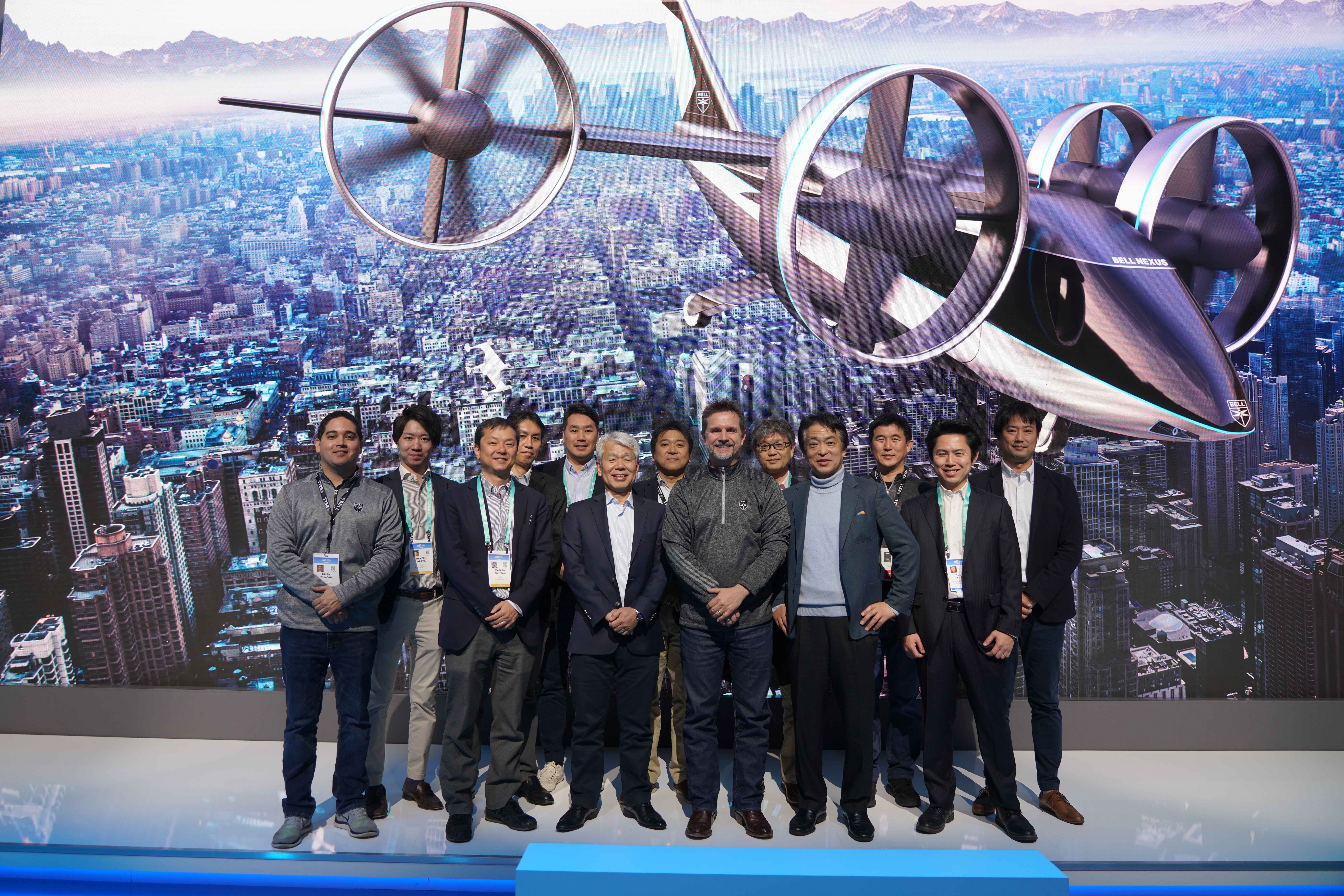Click Here to View This Page on Production Frontend
Click Here to Export Node Content
Click Here to View Printer-Friendly Version (Raw Backend)
Note: front-end display has links to styled print versions.
Content Node ID: 418966
Despite the recent establishment of a new division—eAviation—within parent company Textron to explore electric aviation opportunities, the group's Bell business continues to move cautiously on its two electric demonstration aircraft—the Nexus passenger eVTOL and the Autonomous Pod Transport (APT) unmanned cargo vehicle.
The design of the ducted fan tiltrotor Nexus is still evolving, according to Jason Hurst, Bell's v-p of innovation. “The focus is to come up with something that is safe for public usage, is affordable, quiet, and meets public acceptance in the regulatory environment,” he told a media briefing in late March. “It is a very dynamic and complex problem set.”
Hurst said the U.S. helicopter manufacturer has been focused on helping to shape the “regulatory infrastructure” for advanced air mobility (AAM) and “maturing autonomy and electrification” within Bell. “We have things available in a test environment that not everyone can do and we can accelerate that learning. We have a much better understanding of the environment the vehicle operates in,” he said.
Bell unveiled the revised design for the Nexus 4X eVTOL aircraft in February 2020, while announcing a partnership for the program with Japan's Sumitomo group. Although Bell has publicly displayed a Nexus mockup at several trade shows, Hurst said Bell is “still evaluating concepts” for a passenger eVTOL with continued research focusing on autonomy and a “reliable sensor system” that builds on the company’s military experience. He said that while an all-electric vehicle made sense for intra-urban travel, a hybrid propulsion system would still be required for greater distances. Thus, Bell is focused on a “modular solution that operates in multiple segments,” he added.
While Bell is fortunate to be able to draw on the company’s decades of tiltrotor experience that includes extensive engineering work (from its V280 Valor program), the company is “not ready to share a timeline” for its eVTOL design. “We’re looking at the technical risks and technologies that feed into the [AAM] system,” Hurst said, noting that issues such as battery certifiability and risks such as fire from thermal runaway remain under evaluation. He said Bell is focused on developing a “highly reliable and safe system that meets the time-money-value equation.”
Bell was one of between eight and ten manufacturer partners in Uber's Elevate air taxi ride-hailing platform. However, these partnerships fell apart in December 2020 when rival eVTOL aircraft developer Joby Aircraft acquired Elevate. This change in market dynamics may also have prompted Bell to slow work on the Nexus, since Uber had intended to commence initial air taxi operations as soon as 2023.
Hurst stressed that AAM requires a holistic approach. “This is not just air travel," he said. "This is a link in the node of multimodal transport. What we are intending to do is model that in a way that we can control our own destiny and understand what the optimal vehicles look like for that solution set.”
Though Bell’s passenger eVTOL has yet to fly, the company’s APT has flown several times over increased distances with progressively growing payloads and range—now up to 110 pounds and 10 miles. The vehicle can be scaled to carry up to 500 pounds, said Bell UAS program manager John Wittmaak. The quadrotor APT takes off vertically and then noses over to horizontal flight, using its fixed wings to deliver speeds that are two to three times that of a conventional quadrotor, according to Bell.
Mike Goodwin, Bell's unmanned air system sales and strategy manager, said the company continues to fly the APT in conjunction with aerial demonstration missions with the U.S. Army. In fact, it has already successfully flown delivery missions carrying belted and loose ammunition, medical supplies, food, and water.
In late January, as part of work Bell has been doing in conjunction with NASA, the APT flew a civil mission outside Dallas that demonstrated the vehicle’s ability to integrate into the National Airspace System, simulating package delivery within the AllianceTexas Mobility Innovation Zone (MIZ). The APT reached a maximum altitude of 300 feet over routes that included flying near the I-35W highway and miles of unpopulated fields as the aircraft moved in and out of Class D and Class G airspace. This demonstrated the types of airspace the APT could encounter during a commercial flight and the diversity of airspace within the MIZ.
Both civil and military APT demonstrations will continue this year with modifications to the vehicle, including revised control interfaces and increased autonomous capabilities, according to Bell.
Parent company Textron confirmed the launch of its new eAviation division in late March and this will be led by Rob Scholl, reporting directly to group chairman and CEO Scott Donnelly. However, for now, Textron has declined to provide any further details about its plans for the new business unit.
